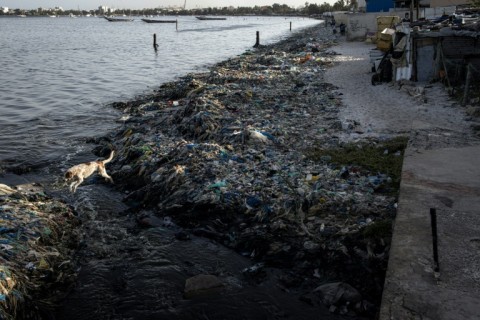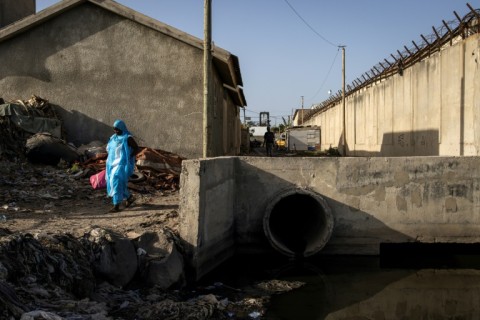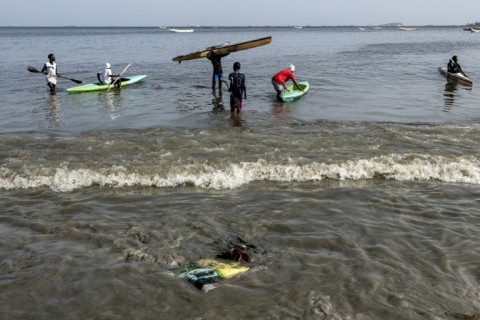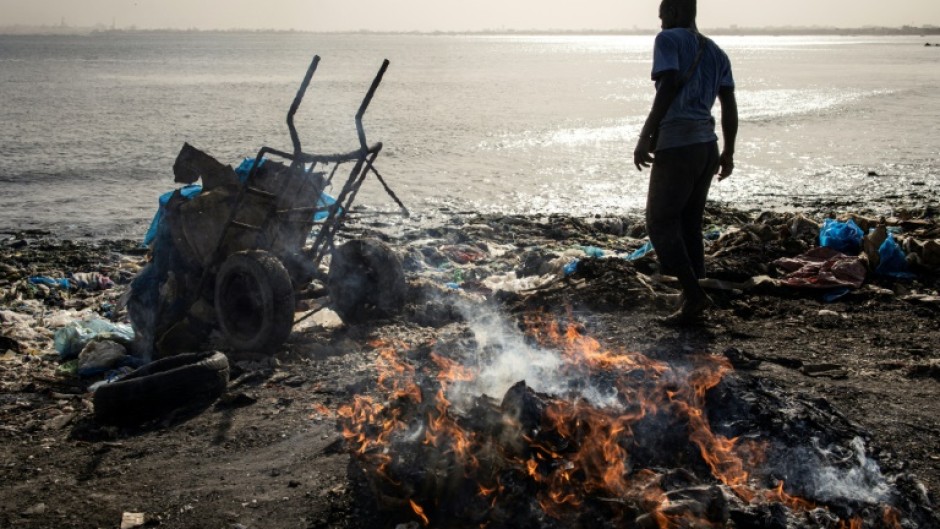DAKAR - On Dakar's long Hann Bay beach, a lone figure with a shovel and wheelbarrow tirelessly picks up mounds of rubbish in such quantities that the task takes on an almost mythological air.
The smell is acrid. A few metres from the man, a pipe carries a black mixture of household and factory wastewater into the Atlantic.
Once considered one of the most beautiful coves in all Africa, the former idyllic stretch of fine sand around twenty kilometres long, adjacent to the port of Dakar, has become the dumping ground for an increasing population and ever-expanding industry.
Most of Senegal's manufacturing industry is located along the bay and discharges its waste directly into it. Ocean pollution is at worrying levels.
The government has been promising to clean up the area for over twenty years.
But a clean-up project launched in 2018 with financial support from the French Development Agency, Invest International, the Chinese Development Bank and the European Union has stalled.
The National Sanitation Agency (ONAS) has just announced the resumption of the work that has been suspended for months. Locals have long been begging for real change.
"We've been told for years that there's a project, but nothing changes. I don't believe in it any more," said Daouda Kane, 45, sitting on the seafront.
A few metres away, a woman is pouring the remains of her lunch pot onto the shore, which is teeming with insects.
- 'High toxicity' -
"Here, you cast your nets and bring in rubbish, and you get sick," complains 53-year-old fisherman Modou Ndong.
In some places, it is almost impossible to see the sand beneath the rubbish.
Every few hundred metres a sewage pipe discharges into the sea, turning the water blood-red at the end of the slaughterhouse pipe and pitch black from the chemical industry and the local tannery.
Anyone who gets too close will feel a burning in their throat.

Amidou Sonko, a marine specialist with the French research and development institute (IRD), has confirmed the "high toxicity" of the area.
His analyses revealed concentrations of E. coli bacteria 13 to 100 times higher than the permitted limit, and the presence of salmonella.
He also observed quantities of enterococci, microplastics, aluminium, chromium and zinc that far exceeded standards.
Such levels pose a threat to human skin, lungs and eyes, but also to biodiversity, he said.
The development of certain species is also impacted in this natural breeding ground for fish.
Nonetheless, Seyni Badiane, a young father, swims with his daughters aged two and five about thirty metres from a canal that discharges green water.
"This is the only beach in the neighbourhood, so we come here," he said. "We're Africans, so we're used to it."
- Industry inertia -
"No one can stop children from bathing here," lamented Mbacke Seck, who has been campaigning for over 25 years to clean up the beach and nearby waters.
"We can't understand this delay. The need is there, the money is there. The negative impact on our daily lives is there. What is preventing this project from going ahead?"

The French group Suez is building a wastewater treatment plant on the coast to treat 26,000 cubic metres per day for 500,000 inhabitants.
It was due to start operating in early 2025, according to the French development agency AFD, one of the main donors.
But part of the work has been suspended for over a year and a half after the company responsible for laying the main pipe linking the port area to the treatment plant went bankrupt, said Alassane Dieng, project coordinator at the ONAS sanitation agency.
"The big difficulty is convincing industry to participate," said Dieng, despite the fact that they occupy 63 percent of the urban area according to a 2018 impact study.
Under the plan, the various industries will be connected to the network on condition that they install pre-treatment units, and pay an industrial charge.

If they do not comply with the rules, a "very dissuasive" pollution tax is planned, much higher than the one in force today, warned Dieng, who said the entire project would be completed by the end of next year.
In the meantime, beachgoers use Hann Bay at their peril.
- by Adrien Marotte

